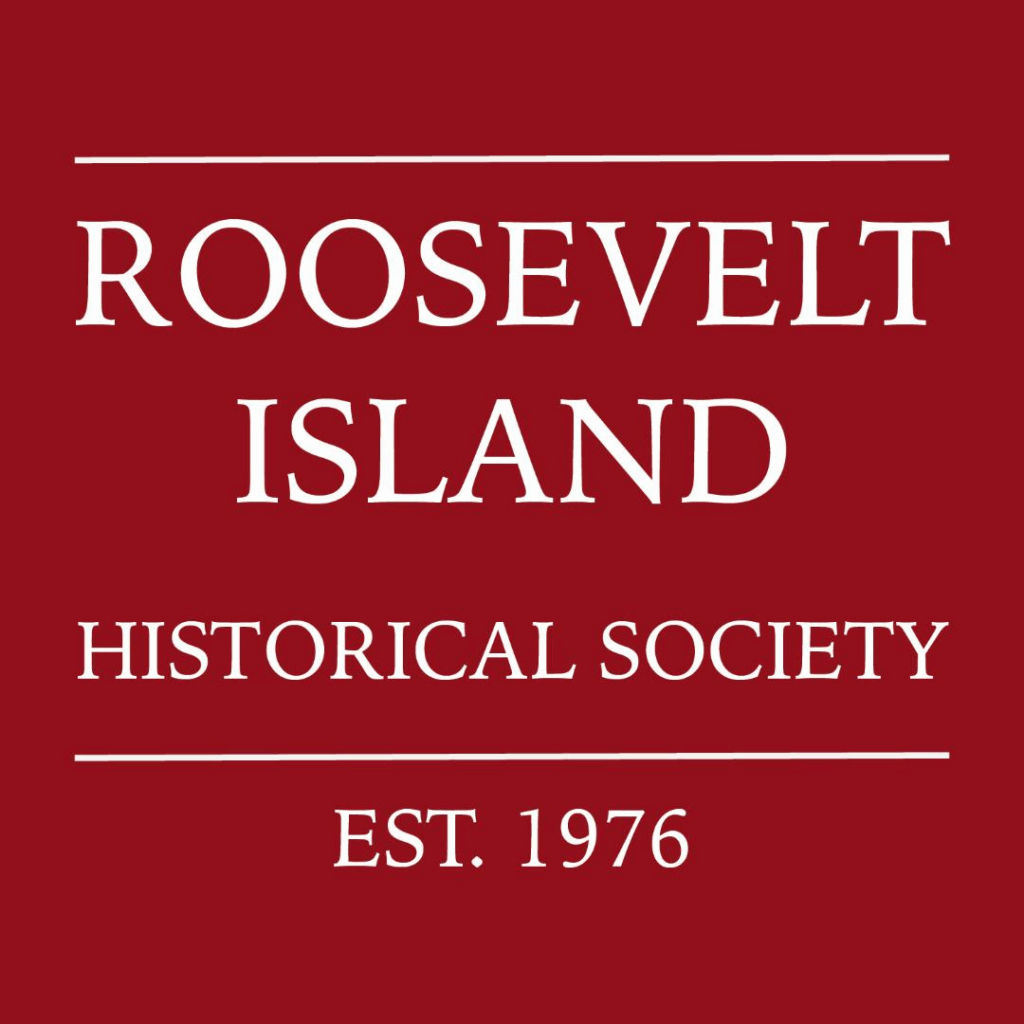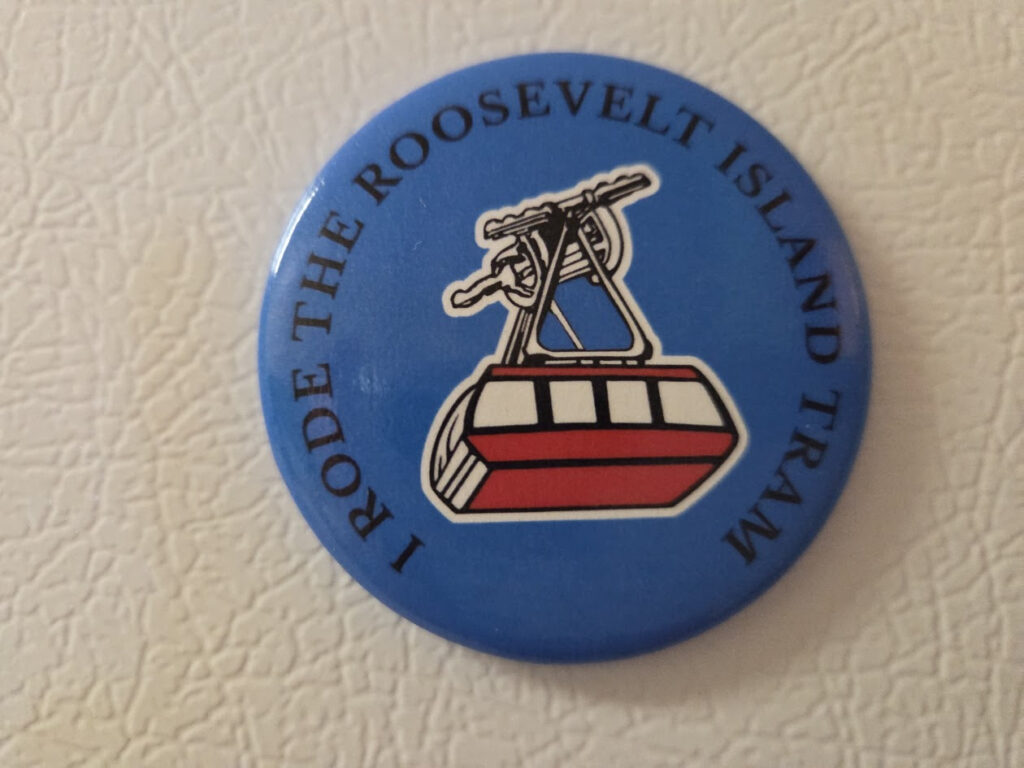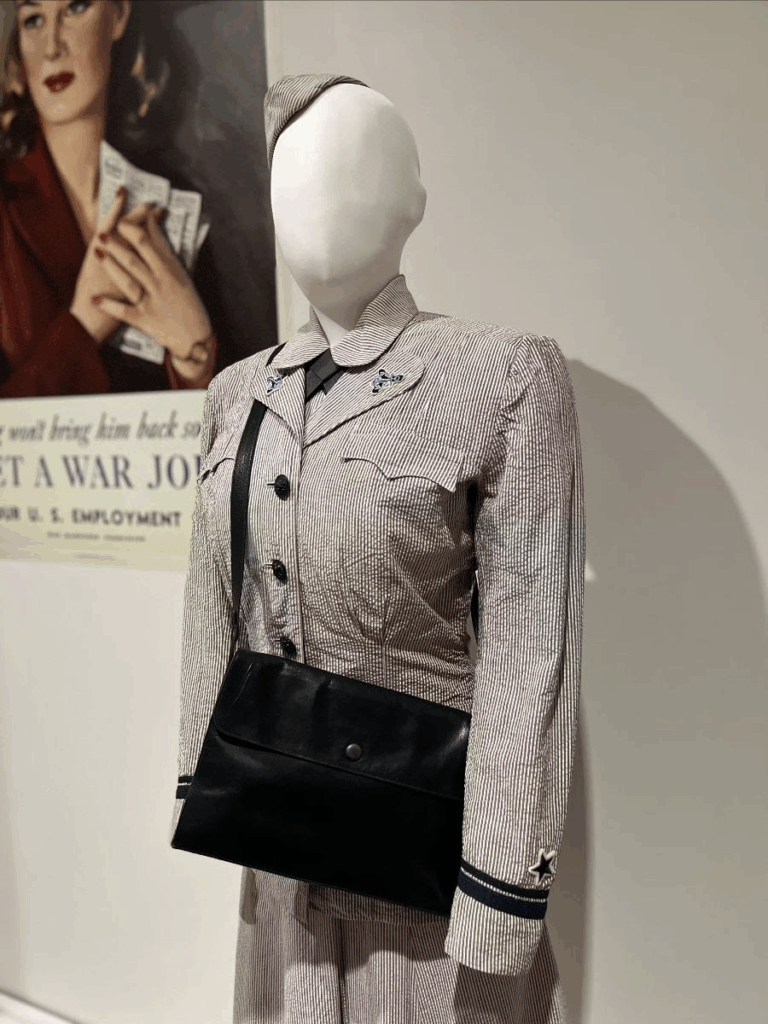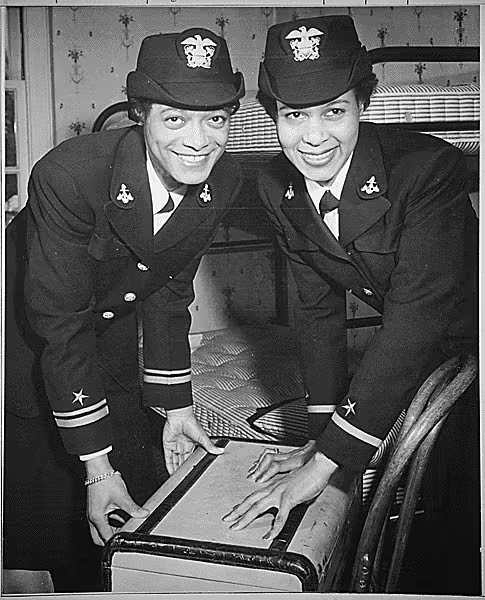Friday – Monday, May 23-26, 2025 – WOMEN SERVED IN WORLD WAR lI


NEW MAGNET & STICKER
ON SALE AT THE R.I.H.S. KIOSK
$5- EACH


Saluting the Women of W.A.V.E.S.
NEW YORK HISTORICAL BLOG
Friday-Monday
May 23-26, 2025
ISSUE #1456

Women’s Work: W.A.V.E.S. Officer’s Uniform on display, July 2023
Happy Women’s History Month! Today, the Center for Women’s History marks the occasion by honoring the women who have served this country as members of the armed services.
This W.A.V.E.S. uniform, which was featured in our past exhibition Women’s Work, was worn by Naval Ensign Mary Jane Natto, who was among the 75,000 women who joined the US war effort during World War II. W.A.V.E.S., or “Women Accepted for Volunteer Emergency Services,” was created by President Franklin D. Roosevelt during the war as women were barred from enlisting in the Navy. As was the case in previous armed conflicts, World War II opened doors for women to join professions not previously accessible to them. W.A.V.E.S. officers worked stateside in jobs including clerical work, mechanics, computer programing, engineering, and air traffic control, replacing men stationed ashore who were now able to join the war effort overseas. But not everyone was welcomed.
Like the rest of the armed forces, the Navy was racially segregated at the onset of World War II. Black women who tried to enlist as volunteers for W.A.V.E.S. were denied. However, in 1944, mounting pressure from the NAACP, First Lady Eleanor Roosevelt, and government officials resulted in the acceptance of two African Americans enlistees, Harriet Pickens and Frances Wills. Pickens and Wills were fully integrated into the service, unlike their male counterparts who remained segregated in the Navy until after the war.

Naval Photographic Center. “Lt.(jg.) Harriet Ida Pickens and Ens. Frances Wills, first Negro Waves to be commissioned. They were members of the final graduating class at Naval Reserve Midshipmen’s School (WR) Northampton, MA.” 1944. Courtesy of the National Archives
When W.A.V.E.S. was first established, enlisted women needed both summer and winter uniforms. In 1942, Josphine Ogden Forrestal, a Vogue editor and wife of the Navy undersecretary, suggested that the Chicago-born Mainbocher (Main Rousseau Bocher, 1891–1976) design the uniforms. Mainboucher had become well-known some years earlier for designing the dress worn by American socialite Wallis Simpson at her 1937 wedding to the Duke of Windsor, formerly King Edward VIII of England. (The event generated extraordinary levels of press interest because Edward had chosen to abdicate the throne the year prior, in order to marry Simpson.) Mainbocher’s design was so famous that its specific shade of blue—chosen by Mainbocher to match Simpson’s eye color—became widely known as “Wallis Blue.”
Mainbocher closed his couture salon in Paris and moved to New York before the United States entered the war effort. He charged the Navy one dollar for his work designing the W.A.V.E.S. uniforms, including this lightweight cotton summer version. It incorporates nautical influences, like the white and navy stripes, but overall, the design of the dress is simple, reflecting Mainbocher’s American sensibility of understated elegance and practicality.
Mainbocher for the U.S. Navy. W.A.V.E.S. Officer’s jacket and purse, 1942–46. Cotton, plastic, leather, synthetic fabric, metal. The New York Historical, Gift of Miss Mary Jane Natto, 1946.58b, d.
The uniforms garnered excited media attention and highlighted the significant contribution of women to the war effort. They also offered ordinary Americans the chance to be dressed by a world-renowned designer. (Of course, Mainbocher was not the only American designer to use his talent for the war effort: in 1942, his contemporary Claire McCardell designed the uniform for the women’s Civilian Defense Organization, also housed in our permanent collection. You can read more about her in an earlier post.)
W.A.V.E.S. was disbanded in 1948 when the Women’s Armed Services Integration Act allowed women to serve in the Navy and the other armed services. In a 2023 ceremony to mark the 75th anniversary of the Act, then-Defense Secretary Lloyd J. Austin III remarked that if the US wanted to remain the best fighting force in the world, “The only way to make that happen is by drawing on the talents of all of our people, and not just men.”
A LETTER FROM JAY JACOBSON
“GOOD NIIGHT AND GOOD LUCK”
We took out a new mortgage on our Rcrx home, and bought two tickets for last night’s performance of Good Night, and Good Luck! It was an extraordinary evening. I’m not exactly a novice at going to the theater, but this is the first (!!) time in my life that I didn’t have a paper ticket in my pocket. The ticket was on my phone. Pat will confirm that I was fidgety beyond belief as I prepared for the evening. Would I be able to locate the squiggly CR drawings, or would they evanesce as so many other items on my laughingly ancient phone have done? If, in fact, squiggly drawings materialized on my phone, would they be accepted by the theater staff?
We arrived at the Winter Garden theater a few minutes after 6:00 pm for a 7:00 pm curtain. There was a line, of course, but as we were panting after the three block walk from the subway, one of the theater security people took immediate pity on the elderly and put us in a second “you’re not really a VIP line”. After catching my breath from our three block hike, I brought up the squiggly stuff on my phone, but I still wasn’t sure that they’d let us in. Finally, I screwed my courage up to ask one of the theater people managing the growing line if the squiggly stuff on my phone was a ticket for last night’s performance. He said, “Yes”. My sigh of relief startled Pat.
Oh, sure! You want to know about the play! We entered the enormous Winter Garden theater, negotiated a hearing device, and were directed to Aisle 4 and our seats. We found our way down towards the front of the theater. Way down to the front of the theater! We were four rows off the stage and at the absolute extreme end of the row! Absolute End of the Row! The good news is that my feet could stick out in aisle 4. The bad news is that we had only a partial view of the stage! We were so early, we sat alone in our row of seats for about thirty minutes.
During that waiting time, Pat began to recall how, in her days working for Chet Bowles as Under Secretary of State, she had several times met and worked with Edward R. Murrow. She remembered that Murrow’s voice was one with which she had become familiar during his broadcasts from London during WW II, and then on CBS Radio during the Eisenhower years. A nugget which she recalled was that Murrow’s aide was Tom Sorensen, brother to JFK’s aide Ted Sorensen. While Murrow was well-known and there was some White House concern that he would be a showboat in the State Department, Pat recalled that he was effective, diligent, and very much a team player. I began to wonder if we could use those memories to score a chance to go backstage after the performance, but decided not even to try.
The play was terrific. Clooney had never before done Broadway theater, but the audience (many of whom were senior citizens) was familiar with him. More than a few of the play’s lines sound like they are being uttered on daily newscasts today. The story is eerily current; the parallel between Joe McCarthy, always the “junior” senator from Wisconsin, and current administration is too clear to ignore.
We understand that Good Night, and Good Luck is being televised on CNN on the night of June 7th. We’re going to watch it again!
Regards,
Jay Jacobson
NEW STICKER SHEETS
BY JESSICA
NOW AVAILABLE AT THE
RIHS KIOSK ($5-)

WANTED
FOR OUR 50TH ANNIVERSARY CELEBRATION
“KEEPING HISTORY ALIVE”
PHOTOS OF THE ISLAND, THE PEOPLE, PLACES, EVENTS THAT MADE OUR COMMUNITY FROM 1975 TO TODAY.
SEND US YOUR PHOTOGRAPHS OF LIFE ON THE ISLAND FOR OUR EXHIBIT DURING OUR CELEBRATION STARTING JUNE 7.
CONTACT JBIRD134@AOL.COM FOR DETAILS.
CREDITS
NEW-YORK HISTORICAL BLOG
Keren Ben-Horin is The New York Historical’s
Curatorial Scholar in Women’s History
All image are copyrighted (c) Roosevelt Island Historical Society unless otherwise indicated
THIS PUBLICATION FUNDED BY DISCRETIONARY FUNDS FROM CITY COUNCIL MEMBER JULIE MENIN & ROOSEVELT ISLAND OPERATING CORPORATION PUBLIC PURPOSE FUNDS.


Copyright © 2025 Roosevelt Island Historical Society, All rights reserved.Our mailing address is:
rooseveltislandhistory@gmail.com

Leave a comment